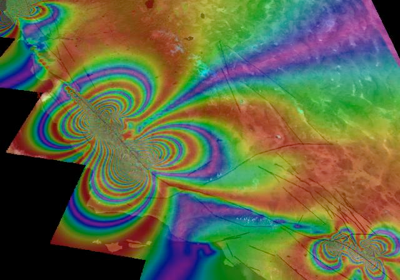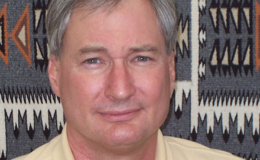John Rundle
Driven nonlinear threshold systems are some of the most important and interesting systems in nature. They include networks of earthquake faults, neural networks, superconductors and semiconductors, and the World Wide Web, as well as political, social, and ecological systems. All have self-organizing dynamics that are strongly correlated in space and time, and all typically display a multiplicity of spatial and temporal scales. They are usually characterized by observable phenomena that can be understood with modern methods of space-time pattern analysis and by a highly nonlinear, complex underlying dynamics whose evolution in space in time is extremely difficult to observe, understand, or predict.
Our group is developing the theoretical and computational methods needed to understand driven, nonequilibrium threshold systems. We are particularly interested in the computational tools necessary to simulate these high-dimensional complex systems within the context of modern, web-based, high-performance computing methods using clusters and other types of parallel, SMP machines. We view the development of the emergent, Semantic Grid as a particularly promising technology, and we are pursuing the development of emergent computational paradigms. Computational simulations thus represent a major tool and a major focus of our research. We emphasize using the computer as a numerical laboratory to perform computational simulations to gain insight into the behavior of complex dynamical systems, to visualize complex and voluminous data sets, to perform data mining to discover hidden information within large data sets, and to assimilate data into computational simulations.
Much of our work is focuses on a particularly important threshold system in nature—earthquake fault systems. Our group’s expertise lies in a systems approach to the development of simulations of complex earth systems with a view to developing the software and theoretical infrastructure needed to understand and forecast and predict these potentially catastrophic events. Emergent computing for such systems arising from the Semantic Grid will incorporate certain key capabilities to produce the desired effect of “digital brilliance”. These capabilities will be capable of coupling code execution with code performance, will be capable of supporting and fusing multiple observational sources, and will be capable of simultaneously reconciling computations at multiple scales.
About John

Coordinates
EMAIL jbrundle (at) ucdavis (dot) edu
OFFICE 534 Physics/Geology Building
PHONE 530-752-6416
WEB https://rundle.physics.ucdavis.edu
MAIL Physics Department, University of California at Davis, One Shields Avenue, Davis, CA 95616


Research
-
1.Driven nonlinear threshold systems
-
2.Self-Organizing Dynamics
-
3.Earthquake Forecasting
-
4.Hazard and Risk Estimation
-
5.Nonlinear Dynamics
-
6.Phase Transitions, Critical Phenomena, and Scaling
Affiliations
-
1.Complexity Sciences Center: Faculty
-
2.Physics Department: Professor
-
3.Geology Department: Professor
-
4.Department of Civil Engineering: Professor
-
5.Graduate Group in Applied Mathematics